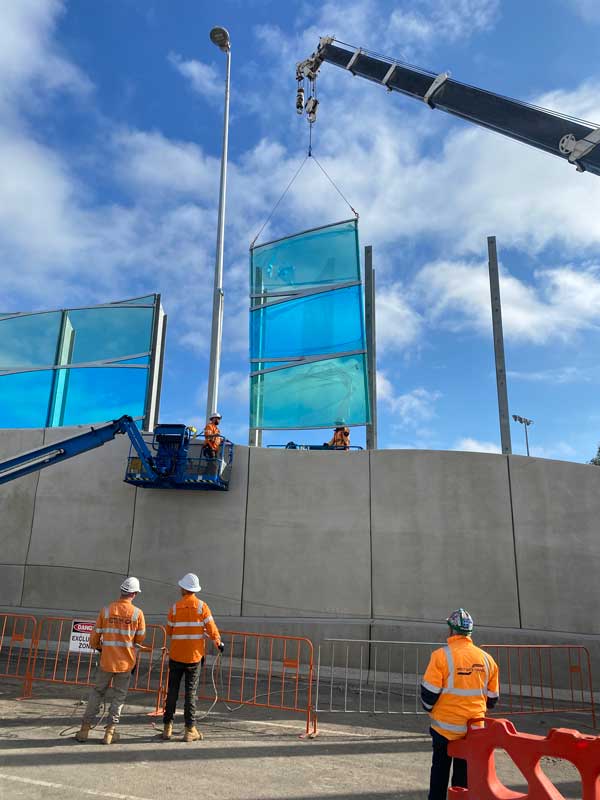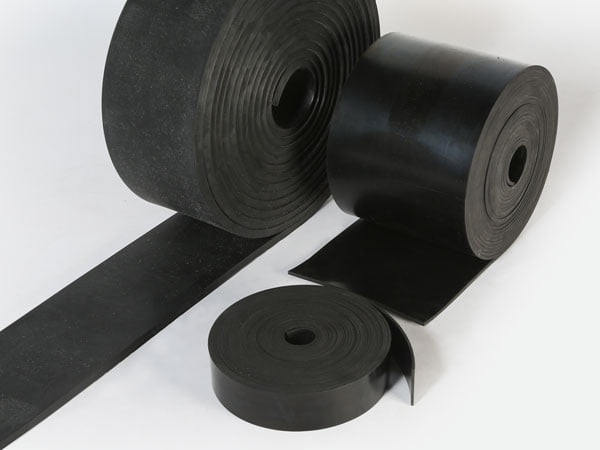Rubber Product Supplied: Reglin Neoprene 65 Rubber Strips
Sizes: 9mm x 65mm and 9mm x 125mm.
These strips were supplied cut-to-size to match the dimensions of the steel base plates on the glass panels, enabling direct installation on top of the concrete wall panels.
Project Overview
On a major freeway noise wall construction project in Victoria, glass and steel panel assemblies were installed atop precast concrete wall panels to create a functional and visually striking acoustic barrier. A critical part of this installation involved sealing the interface between the steel frame of the glass panel and the top surface of the precast concrete.
The Challenge
The construction team faced the challenge of joining two rigid, dissimilar materials, concrete and steel, in a way that ensured effective load transfer and eliminated gaps that could compromise acoustic performance. Without a compliant interface, minor inconsistencies in surface level or flatness would result in uneven bearing and potential voids. Additionally, any gaps could allow noise to pass through the structure, undermining the performance of the noise wall. The solution needed to be weather-resistant, resilient under compression, and easy to install on site to meet tight construction timelines.

Solution: Reglin supplied Neoprene rubber bearing strips to act as a load-bearing void filler and acoustic seal between the two structural components.
Why Rubber Was Used Between Precast Panels and Steel Frames
In construction of structural composite systems, surface variations between concrete and steel can prevent proper load distribution and sealing. The Neoprene strips acted as both bearing and sealing elements to:
- Accommodate irregularities between the two rigid surfaces
- Distribute the heavy load of the glass and steel frames evenly
- Provide cushioning and reduce structural stress
- Create an effective acoustic seal.
For a noise wall to function effectively, all components must work together to block sound transmission. If there are gaps between concrete and steel, noise can travel through.
Neoprene 65 Rubber Strip Advantages
- Excellent compression recovery for long-term bearing
- Weather, ozone and UV resistant Neoprene compound
- Custom-cut for fast, accurate installation
- Durable and flexible in harsh outdoor conditions
Conclusion
The use of custom-cut Neoprene 65 Rubber strips played a critical role in the structural and acoustic performance of this freeway noise wall. By ensuring a sealed, cushioned interface between precast concrete and steel frames, Reglin’s rubber solution delivered both construction efficiency and long-term durability. Withstanding environmental exposure and heavy static loads, the rubber strips helped ensure the wall met strict design, acoustic, and installation requirements.

